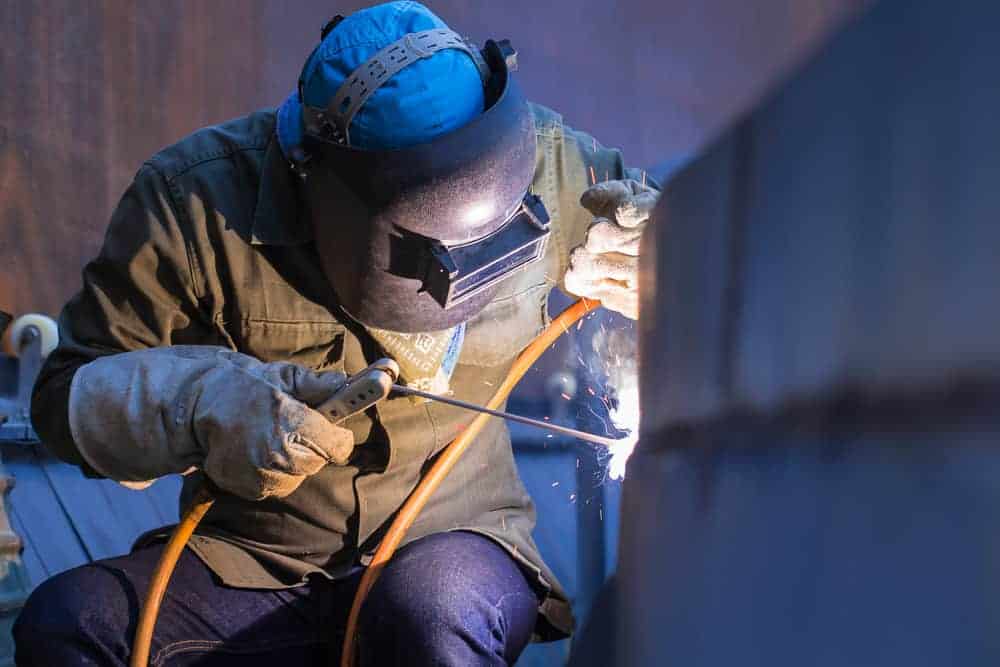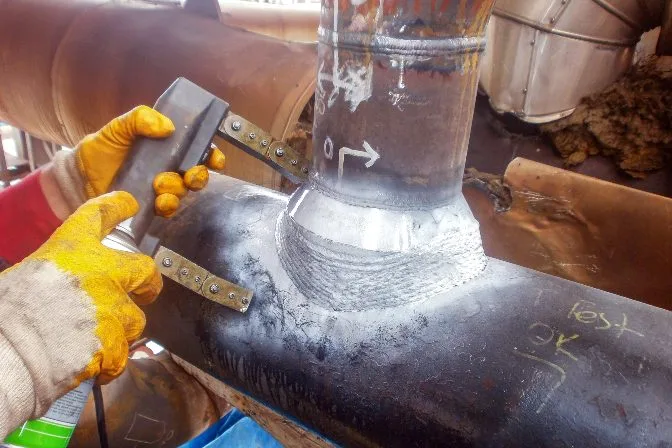Specialist Houston Welding Inspection: Ensuring Architectural Stability and Security
Specialist Houston Welding Inspection: Ensuring Architectural Stability and Security
Blog Article
Discovering the Basics of Welding Inspection: A Thorough Evaluation of Procedures, Tools, and the Relevance of Quality Control in Welding Industries
Welding inspection functions as a keystone in the maintenance of safety and architectural honesty throughout numerous industries. By taking a look at the vital processes and devices used in these assessments, one can appreciate the detailed balance between high quality control and compliance with established criteria from companies such as AWS and ANSI. The approaches employed, consisting of aesthetic and non-destructive testing strategies, are essential in identifying flaws that can compromise the sturdiness of welded frameworks. Understanding the implications of these practices raises important concerns concerning their effectiveness and the future instructions of quality guarantee in welding.
Importance of Welding Assessment
Welding evaluation plays a crucial duty in making certain the integrity and security of welded frameworks. It offers as a methodical approach to examining weld quality, identifying potential defects, and making certain compliance with established criteria and specs. The importance of welding assessment extends past simple adherence to guidelines; it is crucial in guarding human lives and safeguarding financial investments in facilities.
Malfunctioning welds can cause catastrophic failings, resulting in significant economic losses, injury, or death. Therefore, extensive evaluation procedures are necessary to discover concerns such as insufficient infiltration, porosity, or splits before they rise right into important failures. In addition, efficient welding evaluation contributes to the general performance and long life of frameworks, guaranteeing that they can hold up against the conditions for which they were designed.
In addition, the implementation of welding inspection promotes a society of quality and accountability within the welding industry. By focusing on examination, companies demonstrate their commitment to quality, therefore enhancing their credibility and competitiveness in the industry. Eventually, welding evaluation is not just a procedural action yet an essential component of engineering integrity and safety assurance, essential for the effective execution of welding tasks throughout different fields.
Key Assessment Processes
An extensive method to welding assessment entails numerous key processes that are essential for guaranteeing weld quality and structural stability. The first crucial procedure is aesthetic examination, which enables inspectors to recognize surface area problems such as fractures, porosity, and incorrect bead look. This approach serves as an initial evaluation to guarantee that the weld meets defined requirements.

In addition, destructive screening might be carried out on sample welds to evaluate their mechanical homes and performance under stress and anxiety. This procedure includes tensile, impact, and tiredness screening to verify that the weld can stand up to operational conditions.
Last but not least, documentation and reporting are vital components of the evaluation procedure. Maintaining exact documents of examinations, monitorings, and examination results helps ensure conformity with market requirements and facilitates continual enhancement in welding methods. Jointly, these key procedures create the backbone of efficient welding examination and quality control.
Tools for Weld Assessment
Numerous devices are necessary for reliable weld examination, each made to analyze different facets of weld quality and performance. Among the most widely utilized are aesthetic examination devices, consisting of magnifying glasses and borescopes, which enable assessors to recognize surface issues such as cracks, porosity, and improper combination.
Furthermore, ultrasonic screening (UT) equipment is important for detecting interior imperfections. This tool employs high-frequency sound waves to reveal interruptions within the weld, ensuring the stability of the material. Radiographic screening (RT) tools, which use X-rays or gamma rays, likewise supply understanding into the interior structure of welds, enabling the recognition of voids or inclusions.
For specific dimensions, calipers and gauges play a substantial role in making certain and determining weld dimensions adherence to specified tolerances. Hardness testers examine the mechanical residential or commercial properties of the weld, ensuring it satisfies performance requirements.

Strategies for Analyzing Quality
Exactly how can the quality of welds be dependably evaluated? A selection of techniques are used to evaluate weld stability and make certain adherence to defined standards.
Ultrasonic testing (UT) is an additional popular strategy that uses high-frequency acoustic waves to spot inner flaws within the weld. Houston Welding Inspection. This approach provides a detailed view of the weld's stability without endangering its structural stability. Additionally, radiographic testing (RT) utilizes X-rays go to this site or gamma rays to reveal interior issues, offering comprehensive understandings right into weld quality
Magnetic bit testing (MT) works for detecting surface area and near-surface discontinuities in ferromagnetic materials, making see here use of magnetic areas and colored bits to highlight issues. Finally, dye penetrant screening (PT) can be used to reveal surface-breaking flaws by applying a dye that seeps into cracks and is ultimately exposed.
Conformity With Market Specifications
Conformity with sector standards is important for making sure the top quality and safety and security of bonded frameworks. These requirements, developed by companies such as the American Welding Society (AWS) and the American National Criteria Institute (ANSI), offer guidelines that govern the welding procedure, products, and examination methods. Abiding by these requirements not only guarantees the structural integrity of welds yet additionally alleviates dangers connected with failings that can lead to catastrophic consequences.

Welding inspectors are entrusted with validating compliance with these requirements throughout the welding process (Houston Welding Inspection). This involves analyzing welding treatments, keeping an eye on welder qualifications, and conducting detailed examinations of the end product. Non-compliance can cause considerable financial effects, job hold-ups, and damage to a business's track record
Moreover, compliance promotes a society of high quality control within the company. By establishing clear assumptions and criteria, business can preserve uniformity in their outcome and boost general performance. Regular training and updates on criteria are necessary to maintain personnel educated and competent, ensuring that all elements of welding procedures satisfy or go beyond regulatory needs. Ultimately, commitment to sector standards offers as a structure for excellence in the welding market, advertising safety and dependability in bonded structures.

Conclusion
To conclude, welding evaluation works as an essential component in preserving the safety and honesty of bonded structures. Through the implementation of crucial evaluation procedures and the utilization of innovative devices and techniques, potential issues can be recognized and addressed properly. Adherence to sector standards makes sure conformity and advertises a culture of top quality go to this web-site within the welding market. Ultimately, rigorous examination methods not only secure human lives but likewise enhance the toughness and efficiency of bonded building and constructions.
Furthermore, the implementation of welding evaluation fosters a culture of quality and responsibility within the welding sector. Eventually, welding assessment is not just a procedural action but a basic element of design stability and security assurance, important for the effective implementation of welding jobs throughout various industries.
A thorough strategy to welding assessment includes several crucial processes that are important for ensuring weld top quality and structural stability. These criteria, developed by companies such as the American Welding Culture (AWS) and the American National Standards Institute (ANSI), provide standards that control the welding procedure, materials, and examination methods.Welding inspectors are entrusted with verifying compliance with these standards throughout the welding procedure.
Report this page